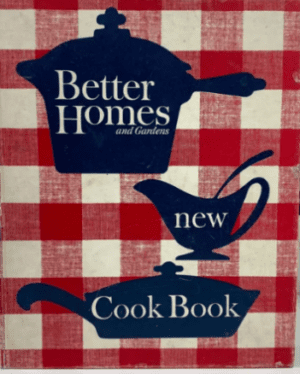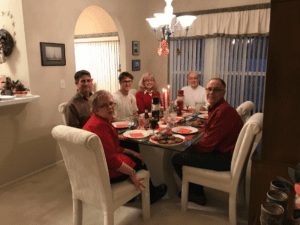Let’s Eat Up: Using Reminiscence to Create An Engaging Dining Experience
 Submitted by Lori K. Yauch
Submitted by Lori K. Yauch
M.A., CCC-SLP
Owner/Manager
Meaningful Memory Maker
Creating an amazing sensory experience.
“Be our guest. Put our service to the test. Try the grey stuff; it’s delicious! Don’t believe me? Ask the dishes! You’re alone, and you’re scared, but the banquet’s all prepared. Tonight, you’ll prop your feet up! But for now, let’s eat up!” (Songwriters Howard Ashman and Alan Menken, 1991)
While the lyric may not directly address the challenges of eating for those with dementia, it serves as a potent reminder of the caregiver’s pivotal role in crafting a comforting dining experience. The references to ‘the banquet’s all prepared’ and ‘let’s eat up’ underscore the caregiver’s significance and value in this process.
As The Disease Progresses, Changes In Eating Habits Can Change
As the disease progresses, individuals may experience changes in their desire or ability to eat, leaving them with a plate of “grey stuff” that is less than appetizing. It leads family and caregivers to wonder, “How can I encourage my loved one to ‘eat up’?”
As a speech-language pathologist specializing in dementia care, I have often been asked this question, and I realize that perhaps the best answer is to meet them where they are. This means:
- If I intend to reach my clients and patients, I need to meet them where they are and when they are. The best avenue for that is reminiscence. (1, 2)
- If where they are and when they are makes them feel that the last thing they can control as they age and stage through the disease is what goes in their mouths, then they will eat what they choose when they choose.
Knowing this, it is my responsibility, as well as that of any caregiver, to encourage and facilitate these choices. So, why not utilize reminiscence to create a pleasant and engaging dining experience?
 Take a Walk Up Culinary Avenue
Take a Walk Up Culinary Avenue
In the beginning, when you sit with your loved one (Mom, Grandma, Great-Grandma) in her Skilled Nursing Facility’s white table-clothed dining room and see a plate of “grey stuff” on a white plate, she looks at it, then at you, and turns away, closing her mouth (the one thing she has control over). So, the plate is a bust, but when dessert (chocolate pudding) arrives, she dives right in! Why? Chocolate is her favorite, and the taste buds associated with sweets survive the longest in the mouth.
Armed with this observation, you grab Mom’s favorite cookbook (the one in the back of the kitchen cupboard with the frayed pages, the coffee stains, and the 3 x 5 index cards) to find her favorite recipes. When you share the cookbook with her, she gravitates to the pictures, which allows you to reminisce about favorite meals and family gatherings and perhaps share pictures of memorable events featuring these foods.
 Make It Sensory Experience.
Make It Sensory Experience.
Once you discover her favorite recipe, consider preparing it together. The preparation can be a bonding event. If possible, bring Mom into the kitchen. With gloved hands, let her feel the sugar, butter, and flour as they come together to form the cookie dough. Let her smell and hear the chocolate chips as they cascade into the bowl. This is not just meal preparation; it’s a sensory experience that can bring joy and engagement to both of you while empowering you with the knowledge of how to create a meaningful dining experience.
As the ground beef, green peppers, onions, diced tomatoes, and tomato paste simmer in the electric fry pan, the pasta bubbles in the pot, and the green bean casserole warms in the microwave. It’s time to relax and get in the mood for food.
 Set The Mood
Set The Mood
Help Mom get ready for the experience with Aroma Therapy. According to the literature, using pure essential oils placed on clothing protectors or blankets complements traditional medicine and may stimulate appetite, energize, and promote relaxation in elderly patients. Many elderly patients improve to the point where they no longer need appetite stimulants, and their sleep medication needs are decreased.
Next, add a little dinner music. In a 2018 study, the Music and Memory personalized iPod music program was provided 30 minutes before a meal and revealed:
- Enhanced swallowing mechanism
- Decreased incidents of choking during mealtime
- Improved nutritional status
- Reduced weight loss
- Reduced need for speech interventions
- Enhanced Quality of Life (QOL)
 Set The Table
Set The Table
When preparing the table, less is more. Start by making it simple to limit distractions.
- A single-color tablecloth
- A solid color placemat under a white plate
- One utensil
- One cup
Remember to turn the lights up! The brighter the room, the easier it is to see the food. This can help direct attention to the business of eating and make the dining experience more enjoyable.
The mood and setting are simple, and the music is familiar— now it’s time to gather at the table.
Dinner’s Ready!
Keep Mom’s serving small (one or two items on the plate), simple, sweet, and colorful. Avoid white food on a white plate!
Contrasting colorful (orange, green, yellow, and red) foods are easier to see on a white plate. Sugar, butter, and syrups can trigger those last surviving tastebuds.
If she refuses some foods, capitalize on her love of sweets (as allowed by any dietary restrictions) and transition to dessert. Dessert, particularly ice cream, is a great catalyst to promote consumption. When assistance with feeding becomes necessary, placing the food in the bowl of the spoon and ice cream or any smooth sweet (pudding, syrup) at the tip will help Mom open her mouth and welcome the food. She may feel special because she gets to eat dessert first.
Following the preparation of her plate, don’t forget her cup. Provide preferred juices, water, and milk. If water isn’t her thing or she is on a thickened liquid to promote swallowing safety, add drink powders and flavored syrups to the cup for an extra spark of flavor.
 Turning The Dining Experience into Lasting Memories
Turning The Dining Experience into Lasting Memories
It’s important to remember that dining isn’t just about the food—it’s a social experience that can promote cherished memories. Creating an inviting atmosphere and engaging in meaningful conversations during mealtimes can help individuals with dementia feel connected and supported. By sharing stories and reminiscing about past gatherings, dining can become a meaningful and enriching social activity that stimulates memory and recall and fosters a sense of belonging. It can also be the place where generations gather and cherish the intimate time spent with aging loved ones, where there is no question of “Where did you go?” “How do we connect?” or “What do we talk about?” We can talk about family and the memories and intimacy we share through our favorite foods.
Think of this new intimacy as an opportunity to share stories of family dinners and holiday gatherings around the table with the foods that Mom made famous. Whether it’s the homemade lasagna, delicious chocolate birthday cake, or the famous Thanksgiving apple pie with crumb topping, it’s all worth sharing.
The Sensory-Rich Experience
In the sensory discussion, I mentioned allowing Mom to be part of preparing the food, which stimulated the senses of touch, sound, and smell. When we add family, conversation, and reminiscing, the experience becomes sensory-rich.
The wonderful thing about adding these elements to the dining experience is that you provide your loved one with comfort and enjoyment and build lasting memories that can be cherished and shared. These moments of connection over favorite foods and shared stories can serve as anchors in the ever-changing journey of dementia. By joining together past and present through the joy of food, fun/funny stories, and shared reminiscences, you and your family nourish your bodies and nurture your connection. A connection that reaches every generation seated at the table.
 Submitted by Lori K. Yauch, M.A., CCC-SLP
Submitted by Lori K. Yauch, M.A., CCC-SLP
Owner/Manager
Meaningful Memory Maker
Meaningful Memory Maker’s mission is to provide individuals and caregivers with the tools and education they need to enhance personal care and physical abilities while encouraging communication, engagement, and socialization through meaningful interaction.
Their Guidebooks and Videos provide support for individuals and their caregivers while fostering communication enhancement through personally relevant, entertaining activities.

 Take a Walk Up Culinary Avenue
Take a Walk Up Culinary Avenue  Make It Sensory Experience.
Make It Sensory Experience. Set The Mood
Set The Mood  Set The Table
Set The Table Turning The Dining Experience into Lasting Memories
Turning The Dining Experience into Lasting Memories 
